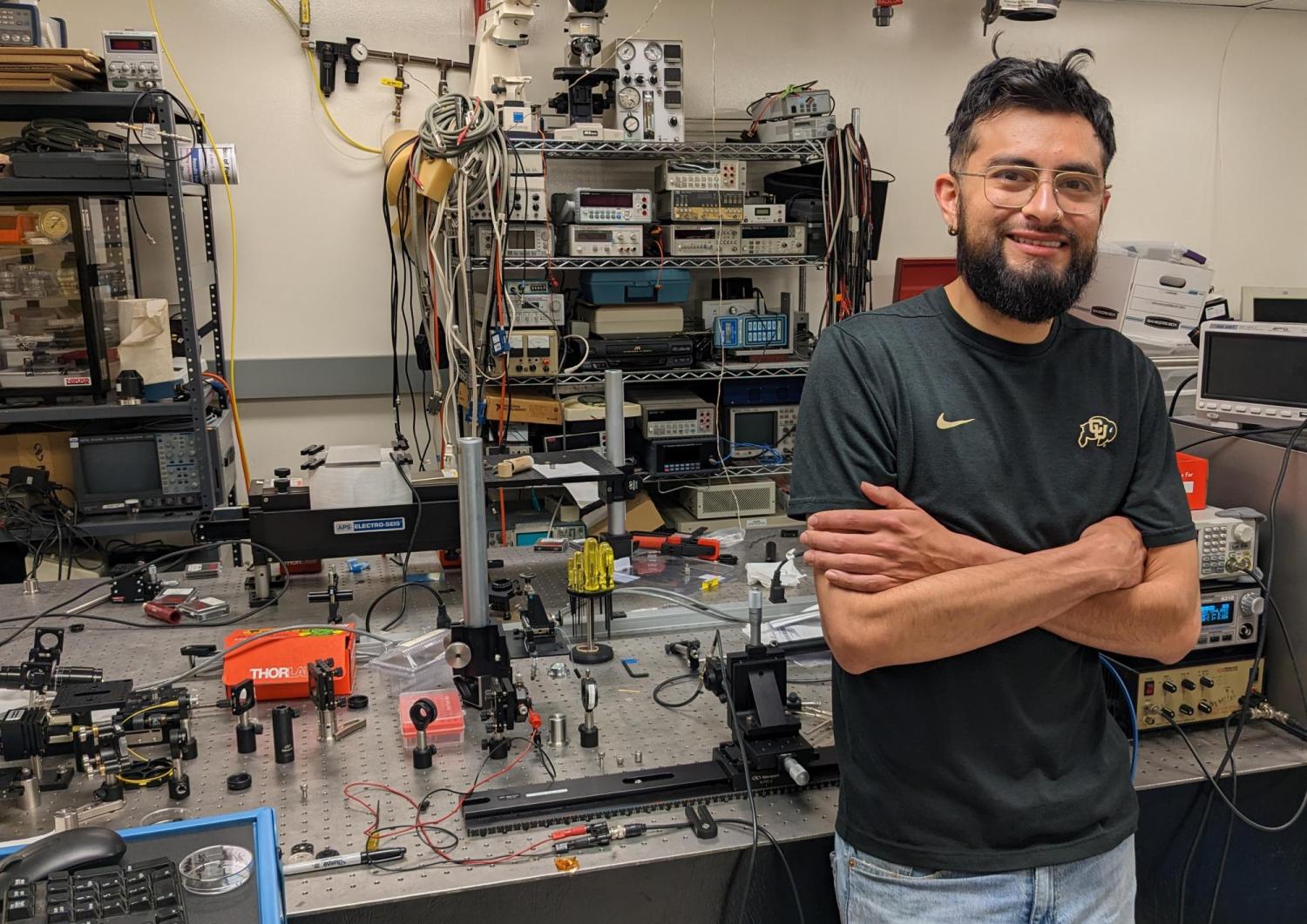Cross-disciplinary collaboration leads to advancement in ‘liquid lenses’

Miscles in the CU MEMS lab
Eduardo Miscles is a third-year PhD student in mechanical engineering who was recently first author on a paper that presents a significant advancement in the field of adaptive optics.
Miscles’ study, titled "Axisymmetrical resonance modes in an electrowetting optical lens" and published in the journal Applied Physics Letters, was a collaboration between Victor Bright’s CU MEMS lab in mechanical engineering and Juliet Gopinath’s lab in electrical, computer and energy engineering. It sheds light on the impact of low-frequency mechanical vibrations on electrowetting-based devices and promotes their application in diverse fields such as microscopy, LIDAR and machine vision imaging systems.
Can you tell us a little about this paper and its impact?
Our collaboration focuses on electrowetting-based adaptive optics, which allows us to manipulate liquid interfaces using a capacitive effect for precise optical control. We are interested in fabricating and characterizing these devices and then utilizing them for applications in diverse fields such as microscopy, LIDAR, wavefront correction and machine vision imaging systems.
The first thought I had when I met with Bright and Gopinath to learn about the research was, “Liquid lenses? Wouldn’t the waves on the liquid interface destroy your lens?” So I was excited to explore the influence of low-frequency mechanical vibration on these devices and show that my first instinct was wrong — a well-designed liquid lens is extremely robust to external vibrations.
In the paper, a simple theoretical model is used to accurately predict resonance modes induced on the liquid interface and numerical simulations confirm the model. Through experimentation, we successfully validated the resonance frequencies by electrically inducing interfacial surface waves and find that the observed resonance frequencies aligned remarkably well with the roots of the zero-order Bessel functions of the first kind, confirming the robustness of the theoretical framework.
Notably, my first instinct may not have been totally incorrect. In the paper, we demonstrated that external axial vibrations significantly impact electrowetting lenses when the liquids used have vastly different densities. Conversely, when using density-matched liquids, the lenses showed exceptional resilience to vibrations. We were even able to use the electrowetting lens to mitigate power loss through a shaking optical system! This opens doors to novel applications in the field, including live animal imaging, LIDAR technology, and machine vision imaging systems, where precise and stable imaging is vital, but the application is inherently in a vibratory environment.
What is the next step for this project?
I think the study's findings hold immense promise for diverse applications, such as interface shape control, active optical system vibration compensation, and interfacial wave cancelation for innovative liquid combinations. By showing the robustness of electrowetting optics, this research sets the stage for future investigations in the field. With this knowledge, we can now develop strategies to mitigate the impact of vibrations and create more robust imaging systems for various applications. The paper serves as a foundation for future endeavors aimed at refining electrowetting optics for real-world deployment.
What’s your favorite part about the research you do and/or the lab you work in?
My favorite part of my research is the collaboration itself. Between Dr. Bright and Dr. Gopinath, I have two advisors with varying but extremely complimentary expertise. Aside from the principal investigators, the lab members I work with daily continue this trend, having vastly different backgrounds ranging from chemistry and physics to electrical and mechanical engineering.
I am excited to continue my work on electrowetting based adaptive optics and using them in novel and exciting optical systems.

